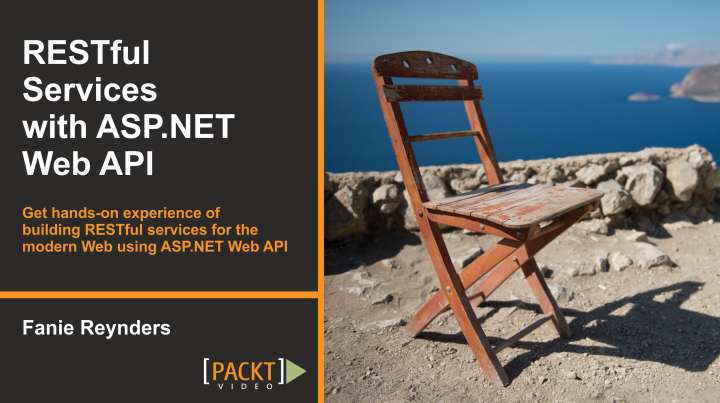Review: RESTful Services with ASP.NET Web API by Packt Publishing
If you are such a big fan of technical courses, you might have noticed Packt Publishing has recently started providing video courses too. Yesterday I watched the course "RESTful Services with ASP.NET Web API" and decided to write a review for this course.
As the name implies, the course is all about ASP.NET Web API and has been organized into 8 chapters. Before going through the details in content, let's have a look at the course specifications:
Title : RESTful Services with ASP.NET Web API
Language : English
Release Date : Wednesday, February 26, 2014
Course Length : 2 hours 4 minutes
Author : Fanie Reynders
Chapter 1 is a short introduction on the whole course & REST specifications and finally simple comparison between Web API and WCF (this part is my favorite).
In chapter 2, author mostly talks about how Web API meet REST concerns and related stuff.
Chapter 3 is defining a simple architecture by using data transfer objects (DTO) and mapping entities by AutoMapper. Author creates a Web API project from scratch and adds the features one by one. Sometimes he uses some preprepared code but everything is clear and of course, the source code also available alongwith the course.
Chapter 4 is all about security stuff is ASP.NET Web API. Author introduces the different type of authentication mechanism which is available in Web API and does an implementation for Basic Authentication, in contrast of the similar video courses that usually stress on Forms Authentication . Actually I liked this chapter and it was quite attractive to me. Then he talks a bit about how to secure the service via https.
Chapter 5 and 6 are most advanced chapters of this course. Chapter 5 talks regarding how to extend and enhance the service by using Media Formatters, Message Handler and Filters with some practical examples. And also talks a little bit about Service Resolver (IoC topic) and OData. Chapter 6 is about how to call service methods by using HttpClient class and introduces some tips and tricks in this regard. He teaches how to write a client side Message Handler which was my favorite part of this chapter.
If you are already familiar with Web API, you might be aware that Web API does not support generation metadata directly (Like WCF). In chapter 7, Author teaches how to generate help pages for the service and extend it by adding a TestClient button etc.
Finally, chapter 8 talks about how to host a Web API service on three different environment. Self-Hosting by a Console Application, Self-Hosting by using OWIN, and Hosting on Windows Azuer.
Some Remarks:
- This course is about 2 hours. That means this course is never a comprehensive reference for leaning Web API and accordingly you should not expect learning everything about Web API by watching it, and also this course is not sort of step by step guide to learn Web API from scratch.
- This course presents some practical tips & tricks in developing services with ASP.NET Web API. Therefore, that is not meant to be most useful for absolute beginners of ASP.NET MVC and ASP.NET Web API.
- In the end, I found this course quite useful and interesting and recommend everybody to watch it considering the facts I mentioned above.
